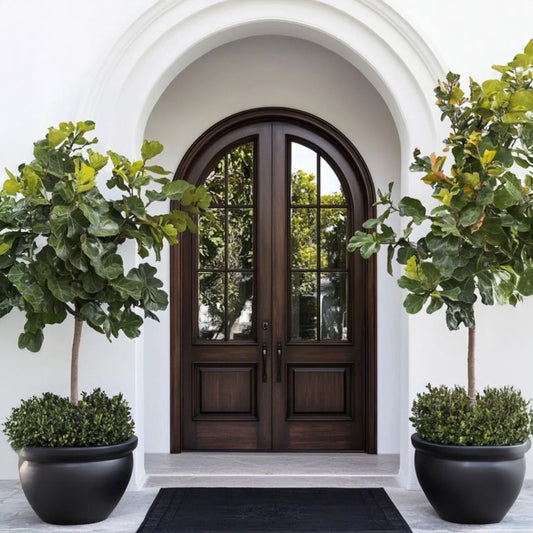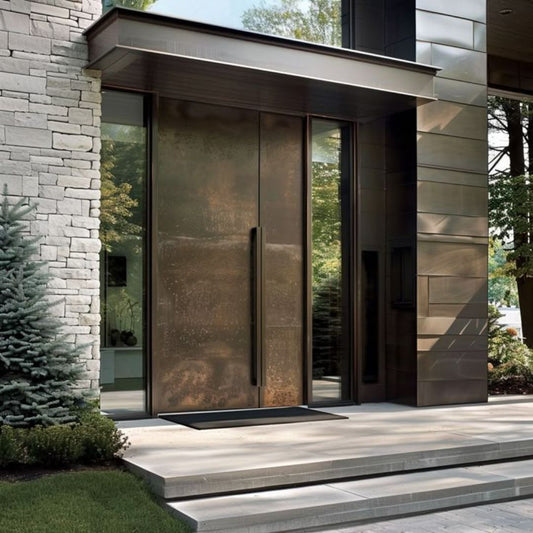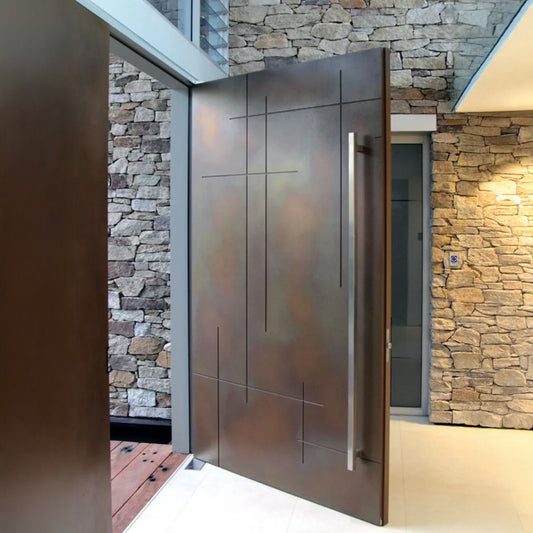
Why You Shouldn’t Paint Composite Doors Yourself
Share
When you invest in a composite door, you’re investing in a product that offers durability, energy efficiency, and aesthetic appeal. Composite doors are designed to withstand the elements and last for years, making them a popular choice for homeowners. However, the key to maintaining the integrity and appearance of these doors lies in the finishing process. One critical aspect that many homeowners overlook is the importance of proper painting techniques. If you’re considering painting your composite door yourself, it’s essential to understand the complexities involved and why it’s best left to professionals.
Understanding Composite Doors and Their Composition
The outer skin of composite doors is designed to be tough and resistant to weathering, but this also makes it less porous than wood or metal, meaning paint doesn’t adhere as easily. The wrong type of paint or a poorly executed paint job can result in cracking, bubbling, or a finish that doesn’t last.
The Complexity of Painting Composite Doors

Painting a composite door is not a simple DIY project. Unlike wood, which can absorb paint, composite materials require a more technical approach. The process is more than just applying colour to the surface; it involves a technique known as PU (Polyurethane) painting.
What is PU Painting? PU painting, or polyurethane painting, is a method that uses polyurethane-based materials to coat surfaces. This type of paint is known for its durability, high gloss, and protective qualities. It’s commonly used on surfaces that require a long-lasting finish, such as composite doors.
The key to successful PU painting lies in its application:
- Multiple Layers: PU painting involves applying at least 4 layers of paint. Each layer needs to dry completely before the next is applied. This step-by-step process ensures that the paint adheres properly and provides a smooth, even finish.
- Machine Application: For the best results, PU painting is typically done by machines in a controlled environment. This ensures even application, consistent drying times, and a finish that’s free of imperfections.
Why DIY Painting Can Go Wrong

While it might be tempting to save money by painting your composite door yourself, the risks far outweigh the benefits. Here’s why:
Inadequate Preparation Proper surface preparation is crucial when painting composite materials. The door needs to be cleaned, sanded, and primed correctly to ensure the paint adheres. If these steps are skipped or done improperly, the paint may not stick, leading to peeling or chipping.
Uneven Application Without the right tools and experience, it’s challenging to apply paint evenly across the surface of a composite door. This can result in streaks, uneven colour, and a finish that looks unprofessional. Worse, an uneven paint job can lead to areas where the paint is too thin, making the door vulnerable to weathering and damage.
Poor Quality Paint Not all paints are created equal. Using the wrong type of paint can lead to poor adhesion, colour fading, and reduced protection against the elements. PU paint is specifically designed for durability and protection, but it’s not always easy to find the right type or know how to apply it correctly without professional guidance.
Reduced Lifespan The quality of the paint job has a direct impact on the lifespan of your composite door. A poorly executed DIY paint job can lead to premature wear and tear. The door’s inner materials could become exposed to air and moisture, leading to rot, warping, or other forms of damage. Ultimately, this could mean needing to replace the door sooner than expected—a far more costly endeavour than hiring a professional to paint it correctly in the first place.
The Professional Advantage

Given the complexities and potential pitfalls of painting a composite door, it’s clear that professional intervention is the best course of action. Here’s why:
Expert Knowledge Professionals understand the unique properties of composite doors and how to treat them. They know which paints and primers to use, how to prepare the surface, and how to apply the paint for the best results.
Controlled Environment Professional painters often use controlled environments to paint composite doors. This ensures that the paint cures properly without being affected by humidity, temperature fluctuations, or dust—factors that can compromise the finish.
Long-Lasting Results When a composite door is painted professionally, you can expect the finish to last for years. The paint will not only enhance the door’s appearance but also protect it from UV rays, moisture, and other environmental factors.
Warranty and Peace of Mind Many professional painting services offer warranties on their work. This means that if the paint starts to peel or fade prematurely, you can have it fixed at no extra cost. This peace of mind is something you won’t get with a DIY job.
Conclusion: Leave It to the Pros

Your composite door is a significant investment, and it deserves the best care possible. While DIY projects can be satisfying, painting a composite door is one task that’s best left to the professionals. The process requires specialised knowledge, tools, and techniques that go beyond the average homeowner’s capabilities. By opting for a professional paint job, you’re ensuring that your door not only looks its best but also remains protected for years to come. So, when it comes to painting your composite door, don’t take shortcuts—invest in quality, and enjoy the long-lasting benefits.



